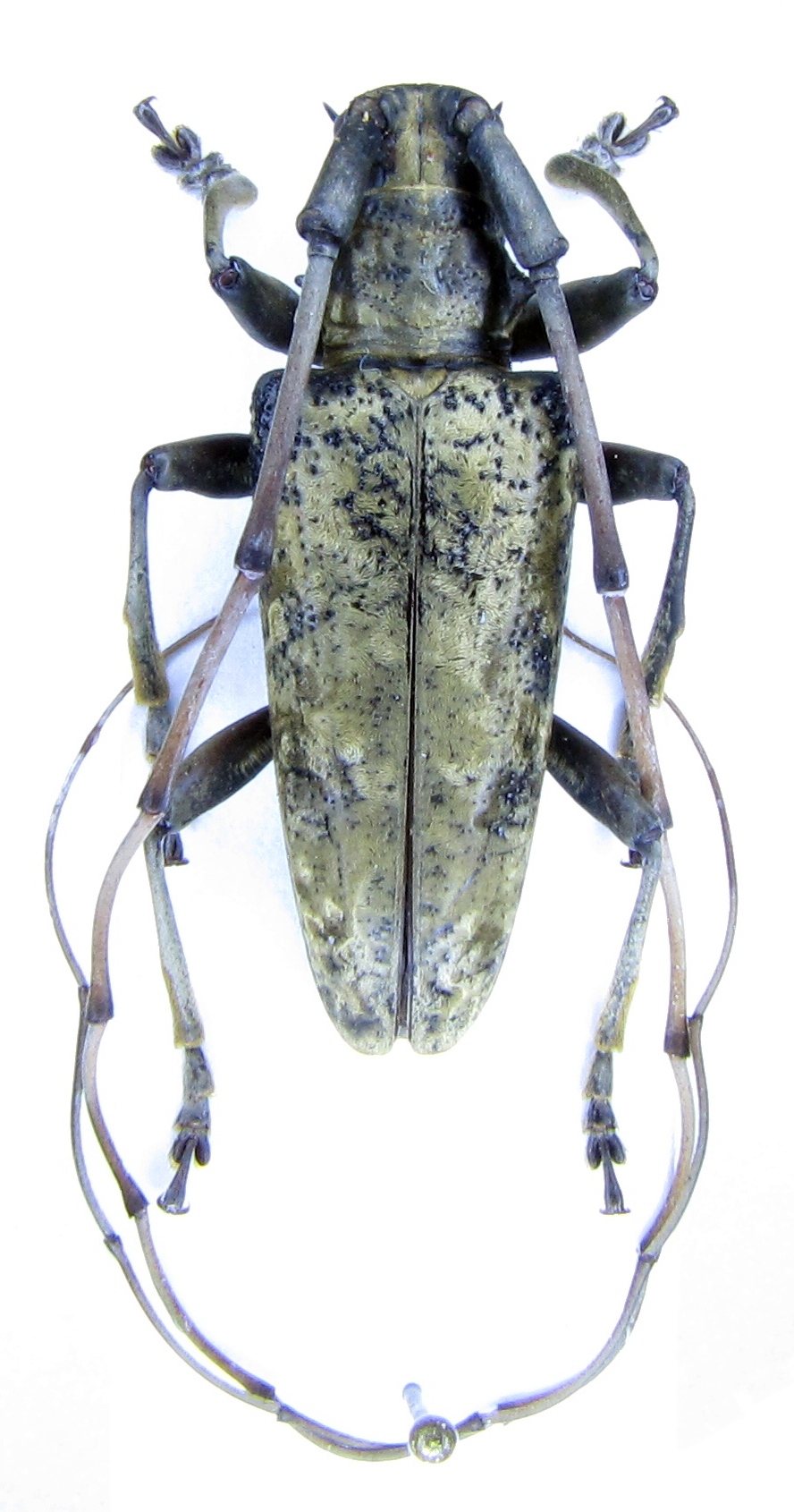| Author |
 Topic Topic  |
|
|
Vitali
Member Rosalia
  
Estonia
994 Posts |
 Posted - 11/04/2023 : 22:16:58 Posted - 11/04/2023 : 22:16:58



|

412.89 KB
I am hesitating again. Is it Acalolepta vitalisi (Pic, 1925), Acalolepta permutans paucipunctata (Gressitt, 1938) or anything else?
28 mm |
Edited by - Xavier on 14/04/2023 07:42:31 |
|
|
znort
Member Purpuricenus
 
China
486 Posts |
 Posted - 13/04/2023 : 04:53:07 Posted - 13/04/2023 : 04:53:07



|
| I think it's not Acalolepta permutans paucipunctata (Gressitt, 1938) according the antenna and the pronotum. |
Chinese Cerambycidae |
 |
|
|
Vitali
Member Rosalia
  
Estonia
994 Posts |
 Posted - 13/04/2023 : 16:02:02 Posted - 13/04/2023 : 16:02:02



|
Hello, Olivier. What specifically did you mean about antennae? The colour? The specimen is probably slightly immature, as antennae segments got curved after relaxing and drying.
The pronotum looks also pretty much as in A. permutans paucipunctata in Francesco's publication. |
 |
|
|
Xavier
Scientific Collaborator
    
France
12215 Posts |
 Posted - 13/04/2023 : 17:00:11 Posted - 13/04/2023 : 17:00:11



|
quote:
Originally posted by Vitali
The pronotum looks also pretty much as in A. permutans paucipunctata in Francesco's publication.
Yes, it is probably this species. I do not see any difference. |
 |
|
|
znort
Member Purpuricenus
 
China
486 Posts |
 Posted - 14/04/2023 : 04:14:24 Posted - 14/04/2023 : 04:14:24



|
quote:
Originally posted by Vitali
Hello, Olivier. What specifically did you mean about antennae? The colour? The specimen is probably slightly immature, as antennae segments got curved after relaxing and drying.
The pronotum looks also pretty much as in A. permutans paucipunctata in Francesco's publication.
The antennomere are just black at the extremity ands the lasts segments almost white if we compare with the type |
Chinese Cerambycidae |
Edited by - znort on 14/04/2023 04:20:17 |
 |
|
|
Vitali
Member Rosalia
  
Estonia
994 Posts |
 Posted - 14/04/2023 : 09:58:16 Posted - 14/04/2023 : 09:58:16



|
quote:
Originally posted by znort
The antennomere are just black at the extremity ands the lasts segments almost white if we compare with the type
It is true. That is why I also hesitate. But if this specimen is somewhat immature, the colour contrast may not be that high. Another feature which puzzles me is a goldish shine of elytral pubescence. Unfortunately it is not visible well in the photo.
But also as Xavier, I am more inclined to A. permutans.
Hopefully, Francesco can tell something. |
 |
|
|
Francesco
Forum Admin
    
Luxembourg
9454 Posts |
 Posted - 14/04/2023 : 10:44:42 Posted - 14/04/2023 : 10:44:42




|
Does it show granules on the elytral base?
There are not many species with this feature... |
 |
|
|
Vitali
Member Rosalia
  
Estonia
994 Posts |
 Posted - 15/04/2023 : 10:51:43 Posted - 15/04/2023 : 10:51:43



|
Yes, indeed! I missed an important character. The base of elytra is granulated and there is no silverish pubescence on ventral side.
So, Acalolepta permutans paucipunctata (Gressitt, 1938) (?) |
 |
|
| |
 Topic Topic  |
|


